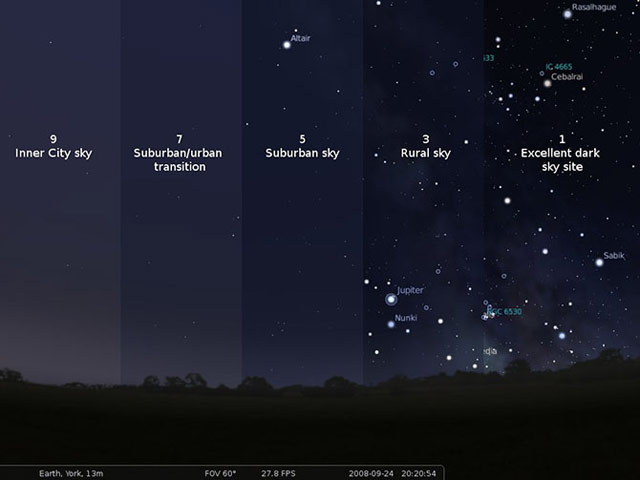Lost in Light: How Light Pollution Obscures Our View of the Night Sky
Because of light pollution from urban areas, many people around the world don’t know what the night sky actually looks like. Sriram Murali made a video to illustrate light pollution levels by shooting the familiar constellation of Orion in locations around the US with different amounts of light pollution, from bright San Francisco to a state park in Utah with barely any light at all. In SF, about all you can see are the handful of stars that make up Orion’s belt, arms, and legs. But as the locations get darker, the sky explodes in detail and Orion is lost among the thousands of visible stars (and satellites if you look closely).
This video is a followup to one Murali made of the Milky Way in increasingly dark locations, which is even more dramatic:
But he did the second video with Orion as a reference because many people had no concept of what the Milky Way actually looks like because they’ve never seen it before. Murali explains why he thinks light pollution is a problem:
The night skies remind us of our place in the Universe. Imagine if we lived under skies full of stars. That reminder we are a tiny part of this cosmos, the awe and a special connection with this remarkable world would make us much better beings — more thoughtful, inquisitive, empathetic, kind and caring. Imagine kids growing up passionate about astronomy looking for answers and how advanced humankind would be, how connected and caring we’d feel with one another, how noble and adventurous we’d be.
The measurement scale for sky darkness is called the Bortle scale, as explained by David Owen in his wonderful piece in the New Yorker:
In Galileo’s time, nighttime skies all over the world would have merited the darkest Bortle ranking, Class 1. Today, the sky above New York City is Class 9, at the other extreme of the scale, and American suburban skies are typically Class 5, 6, or 7. The very darkest places in the continental United States today are almost never darker than Class 2, and are increasingly threatened. For someone standing on the North Rim of the Grand Canyon on a moonless night, the brightest feature of the sky is not the Milky Way but the glow of Las Vegas, a hundred and seventy-five miles away. To see skies truly comparable to those which Galileo knew, you would have to travel to such places as the Australian outback and the mountains of Peru.
Nicola Twilley and Geoff Manaugh interviewed Paul Bogard, author of a book on darkness about light pollution and the Bortle scale:
Twilley: It’s astonishing to read the description of a Bortle Class 1, where the Milky Way is actually capable of casting shadows!
Bogard: It is. There’s a statistic that I quote, which is that eight of every ten kids born in the United States today will never experience a sky dark enough to see the Milky Way. The Milky Way becomes visible at 3 or 4 on the Bortle scale. That’s not even down to a 1. One is pretty stringent. I’ve been in some really dark places that might not have qualified as a 1, just because there was a glow of a city way off in the distance, on the horizon. You can’t have any signs of artificial light to qualify as a Bortle Class 1.
A Bortle Class 1 is so dark that it’s bright. That’s the great thing — the darker it gets, if it’s clear, the brighter the night is. That’s something we never see either, because it’s so artificially bright in all the places we live. We never see the natural light of the night sky.
If you’d like to find a place near you with less light pollution, check out The Light Pollution Map. I’m lucky enough to live in a place with a Bortle class of 3 and I’ve visited class 2 locations before…visiting one of the class 1 parks out west is definitely on my bucket list.






Stay Connected